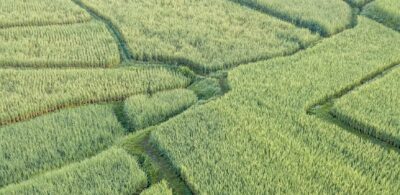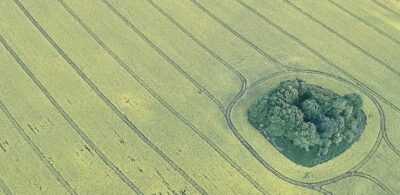Breaking down biodiversity banking: part two
15 March 2021
In this four-part series, Corrs’ Environment and Planning team examines biodiversity banking across Australia, its role in environmental assessment processes at state and federal levels and the different transaction structures for buying and selling biodiversity credits.
In this part we examine the evolution of biobanking across Australia into a range of sophisticated schemes that are available to developers and government agencies. We also provide a breakdown of the various schemes in play across states and territories.
Biodiversity banking schemes in Australia
In Australia, the globally recognised practice of ‘biodiversity banking’ has been implemented by almost every state and territory.
The terminology varies, with some jurisdictions referring to their schemes as a biodiversity credit or offset schemes and other states referring to their schemes as an environmental offsets scheme.
However, regardless of the name, these schemes facilitate the creation of credits or offsets which are then used by developers (including government agencies) to offset the environmental impacts of their developments and / or infrastructure projects. The idea is to balance the impact on biodiversity on the project site with the protection and management of native vegetation on another site.
Biodiversity banking in Australia is evolving into a greater range of sophisticated options available to developers and government agencies who need to offset the biodiversity impacts of their developments and/or infrastructure projects. Previously, biodiversity offsets used to consist almost entirely of a narrow form of ‘conservation covenants’.
New South Wales
In NSW, the Biodiversity Offset Scheme is administered by the Department of Planning, Industry and Environment under the Biodiversity Conservation Act 2016 (NSW). Central to the NSW Biodiversity Offset Scheme are Biodiversity Stewardship Agreements, which landowners enter into with the NSW Minister for the Environment to create biodiversity credits.
Under the terms of these Biodiversity Stewardship Agreements, in return for the creation of biodiversity credits, land owners are responsible for the ongoing conservation management of their land. Land owners will also receive annual payments from the Biodiversity Conservation Trust, a statutory not-for-profit entity, to assist with the cost of ongoing conservation management.
The NSW Biodiversity Offset Scheme is an integral part of the NSW planning system. The biodiversity impacts of a development are assessed as part of the environmental assessment processes. If a development impacts biodiversity values (as set out in part one of this Insight series), it would not be uncommon for the development consent to contain an obligation for the proponent to retire a specific number and type of biodiversity credits to offset the biodiversity impacts.
The credits created from the Biodiversity Stewardship Agreement can be retired by the land owner, or sold to others to retire, to satisfy a development consent obligation.
The NSW Biodiversity Offset Scheme has also recently been endorsed by the Commonwealth. Accordingly, impacts to Commonwealth listed species and obligations under Commonwealth environmental approvals can be offset under the NSW scheme.
Queensland
Environmental offsets in Queensland are dealt with slightly differently (under the Environmental Offsets Act 2014 (Qld)). Conditions requiring ‘environmental offsets’ can be imposed by state or local government and can be:
- a proponent-driven offset (i.e. the developer takes certain actions, usually regulated by relevant conditions);
- a financial settlement offset (i.e. the developer pays an amount to the relevant authority);
- a combination of the two.
However, instead of a formal credit system, developers providing a proponent-driven offset can make use of ‘advanced offsets’. An ‘advanced offset’ is an area of land that has been registered by the Queensland State Department of Environment and Science or the local government (depending on whether the land contains matters of national, state or local environmental significance).
A developer can view the offsets register online to match their offset requirements with registered advanced offsets. The developer can then enter into an ‘offset delivery agreement’ with the entity providing the offset (often the owner of the registered offset land).
Victoria
In Victoria, landowners interested in biodiversity banking can generate native vegetation credits by entering into agreements to secure and manage their land. These agreements are called ‘offset security agreements’ and ‘offset management plans’.
Landowners who hold a surplus of credits can enter into potentially lucrative third party offset arrangements to trade their credits with developers who need to offset their own biodiversity impacts.
There are two types of offset that can be provided – a General Offset and a Species Offset. Offset value is measured in ‘habitat units’.
A proponent which seeks to remove, destroy or lop native vegetation must apply to the responsible authority for the area for a permit to do so, subject to limited exemptions.
If the responsible authority grants the permit, the permit must include a condition requiring the proponent to offset the removal of the vegetation. The condition must specify the offset requirement and set down a timeline to secure the offset. In response, the proponent may either enter into a first or third party offset arrangement.
First party offsets involve the conservation of land on the property to be cleared. Third party offsets involve the purchase of native vegetation credits from a third party which has already agreed to secure and manage its land. It is these third party offsets which allow land owners to generate a return on their land by ‘banking’ its biodiversity.
Offset sites, their details and value are listed on the Native Vegetation Offset Register.
Other states and territories
In addition to NSW, Victoria and Queensland, biodiversity banking schemes also operate in Western Australia, South Australia and the ACT. The Northern Territory is currently developing a Biodiversity Offsets Policy, while Tasmania operates discrete offset programs in relation to certain species and activities.
There is a substantial market for the biodiversity credits. In NSW, the total value of biodiversity credits in existence is over $400 million. The need for ‘like-for-like’ offsets (i.e. the impacts on native vegetation must be offset with similar biodiversity credits) results in some credits being in high demand and being difficult to source in the quantities required, particularly for large scale projects. Accordingly, the proper documentation of those transactions is critical to ensuring that the required credits are secured.
In parts three and four of this series, we outline possible transaction structures and key matters vendors and purchasers should keep in mind in negotiating the sale and purchase of biodiversity credits.
Authors

Head of Environment and Planning

Partner

Senior Associate
Tags
This publication is introductory in nature. Its content is current at the date of publication. It does not constitute legal advice and should not be relied upon as such. You should always obtain legal advice based on your specific circumstances before taking any action relating to matters covered by this publication. Some information may have been obtained from external sources, and we cannot guarantee the accuracy or currency of any such information.
Key Contact
Head of Environment and Planning



